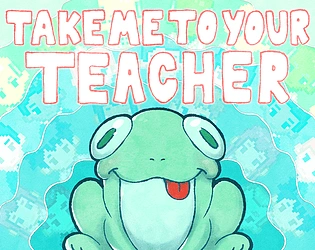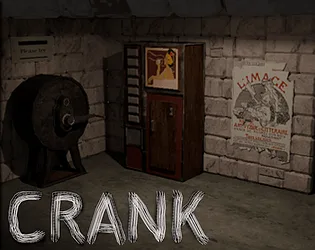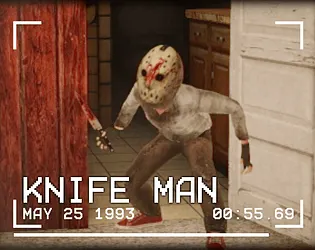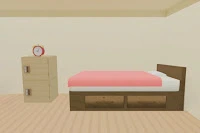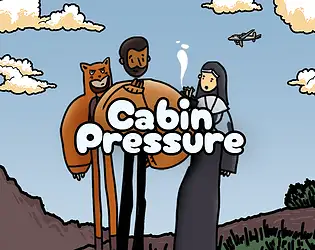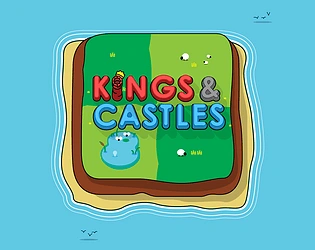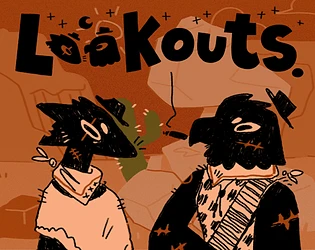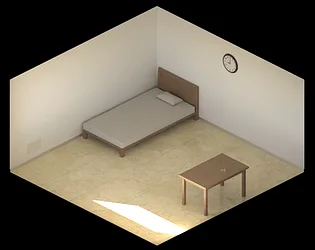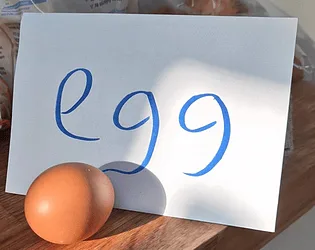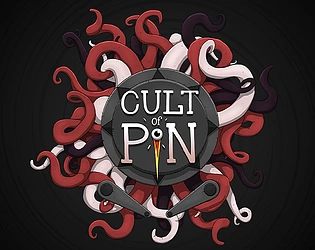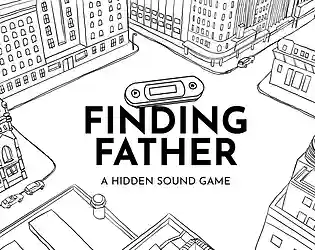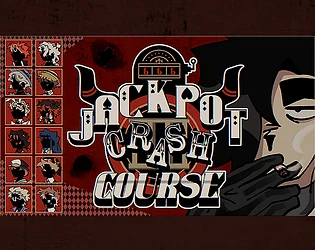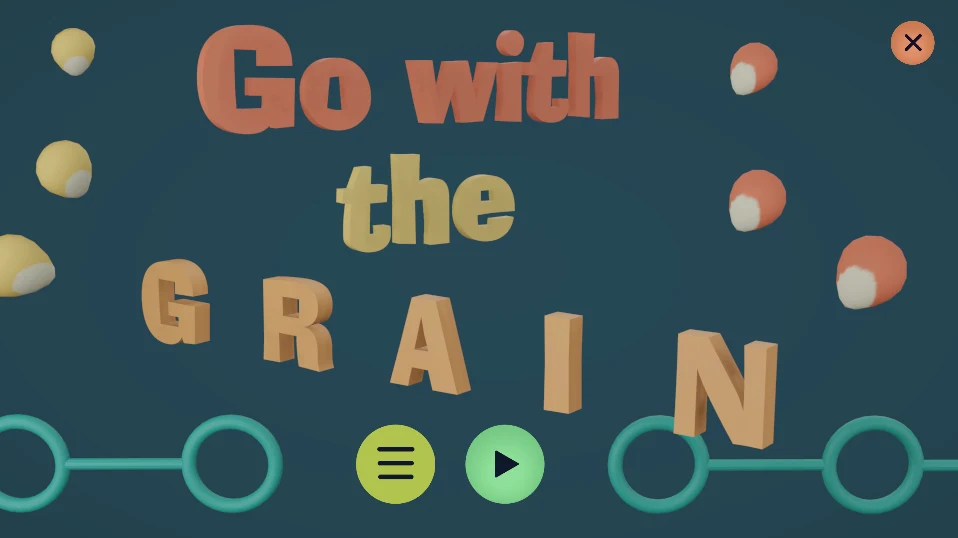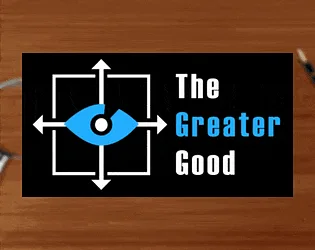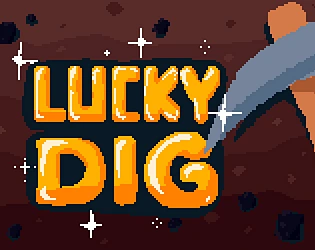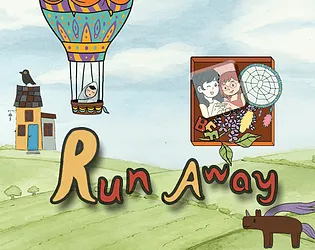
Run Away
Solve heartfelt puzzles to sneak out and join your friends for a party
Run Away
Run Away — Escape Your House with Heart and Cleverness

Run Away offers a refreshing take on the escape room genre by grounding its puzzles in authentic, relatable moments. Instead of escaping from a sinister dungeon or mysterious laboratory, you're simply trying to sneak out of your own house to meet friends at a party. Each puzzle reflects real-life experiences—finding misplaced keys, deciphering notes, navigating family dynamics—making this short adventure feel personal and heartwarming rather than purely mechanical.
🎮 What is Run Away?
Run Away is a cozy point-and-click escape room game that transforms everyday household challenges into engaging puzzles. Your goal is straightforward: leave your house undetected and join your friends for a party. But as anyone who's tried to sneak out knows, it's never as simple as walking through the front door.
The game presents a series of interconnected tasks and puzzles that stand between you and freedom. Maybe you need to find your shoes, locate your house keys, disable a squeaky door, or leave a convincing note. Each challenge draws from real-life scenarios, creating a sense of authenticity that makes the experience feel less like solving abstract riddles and more like navigating actual obstacles.
What makes Run Away special is its warmth. The developer infused the game with personal memories and genuine moments from their own life, giving each puzzle emotional resonance. Objects aren't just puzzle pieces—they're reminders of friendships, family relationships, and the small rebellions of youth.
The game's cozy aesthetic matches its tone perfectly. Soft colors, comfortable environments, and gentle background music create a relaxed atmosphere. There's no time pressure, no jump scares, no punishing failure states. Run Away wants you to take your time, explore thoughtfully, and enjoy the process of solving each heartfelt puzzle.
Despite being a short experience, the game leaves a lasting impression. It captures that specific feeling of anticipation when you're about to do something exciting, the nervousness of hoping you don't get caught, and the satisfaction when everything clicks into place.
🕹️ How to Play Run Away
Run Away uses intuitive point-and-click controls that make exploration and puzzle-solving effortless:
Controls
Desktop:
- Mouse click – Move to locations by clicking where you want to go
- Click objects – Interact with items, examine clues, and solve puzzles
- Click and drag – Pick up items and use them on other objects
Mobile/Tablet:
- Tap to move – Touch a location to walk there
- Tap objects – Interact with anything clickable in the environment
- Drag items – Pick up and use inventory items on objects
Gameplay Mechanics
- Explore your house – Click around to discover interactive objects and areas
- Examine everything – Many puzzles require careful observation of details
- Collect items – Pick up useful objects that might help you escape
- Solve puzzles – Complete tasks that gradually clear obstacles between you and the exit
- Combine items – Sometimes you need to use multiple objects together
- Progress toward freedom – Each solved puzzle brings you closer to sneaking out successfully
Strategy Tips
- Click everything – Even seemingly mundane objects might be important
- Read notes carefully – Written clues often contain essential information
- Think practically – Puzzles follow real-world logic rather than abstract game logic
- Check multiple rooms – Solutions often require items from different locations
- Pay attention to details – Small environmental cues frequently hint at puzzle solutions
- Take your time – There's no rush; enjoy the cozy atmosphere and personal touches
📸 Run Away Gameplay Walkthrough
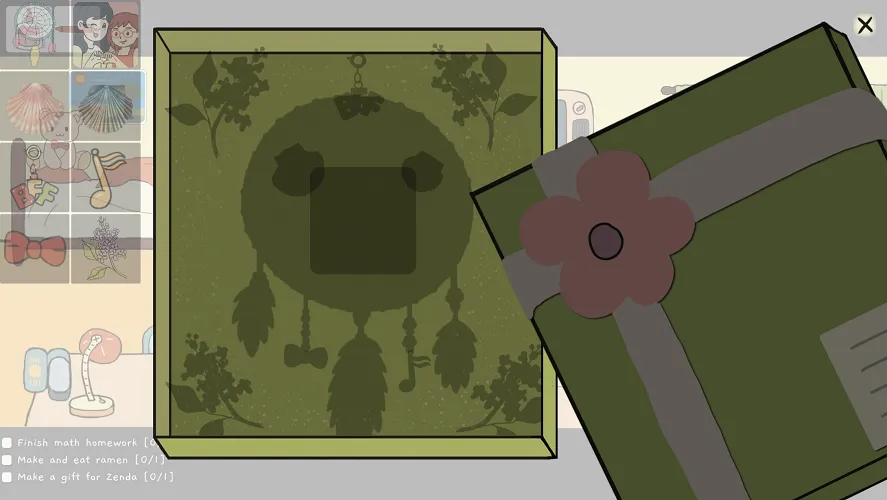
🏠 Starting at Home
When Run Away begins, you're in your house with one goal: get out and meet your friends. But as you quickly discover, leaving requires more preparation than simply walking out the door.
Your first task is exploration. Click around your environment to understand what's available. You'll find familiar household objects—furniture, books, personal belongings—that paint a picture of who you are and why this escape matters.
Some items are purely decorative, adding personality to the space. Others are interactive puzzle elements. The game doesn't mark which is which, encouraging organic exploration. You might click a bookshelf and discover a hidden note, or examine a desk drawer to find something essential.
This opening section establishes the game's tone: warm, personal, and grounded in reality. You're not solving abstract logic puzzles in a vacuum—you're navigating the specific challenges of this particular house and this particular escape attempt.
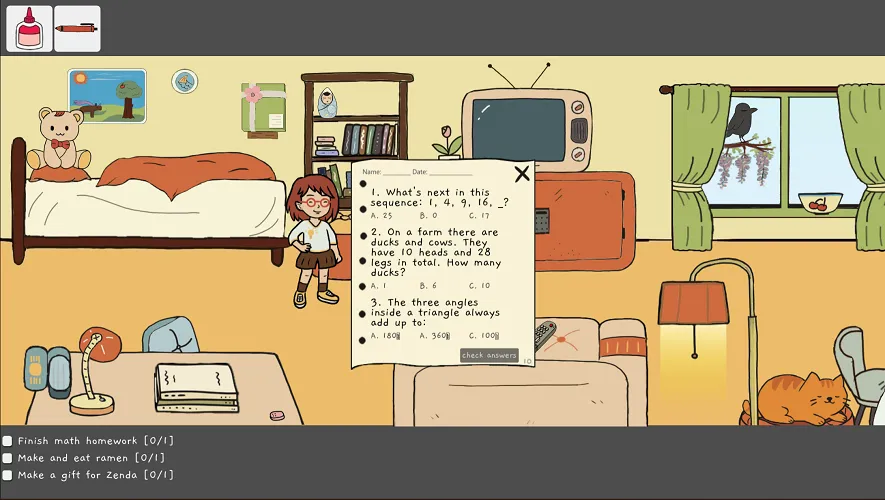
🔍 Discovering Clues and Items
As you explore deeper, Run Away reveals its puzzle structure. You'll encounter challenges that block your progress: a locked drawer that might contain something important, a door you can't open without the right tool, or a situation that requires creative problem-solving.
Finding solutions means collecting items and clues scattered throughout the house. A key hidden in one room might unlock something crucial in another. A note stuck to the fridge might provide a password or hint. A personal item might need to be moved or interacted with in a specific way.
The game's puzzles are satisfyingly logical. They don't rely on moon logic or arbitrary item combinations. Instead, they mirror real-world problem-solving: if you need to open a locked box, you need to find its key or discover its combination. If you need to reach something high up, you need to find something to stand on.
This grounded approach makes solutions feel earned rather than stumbled upon through random clicking.
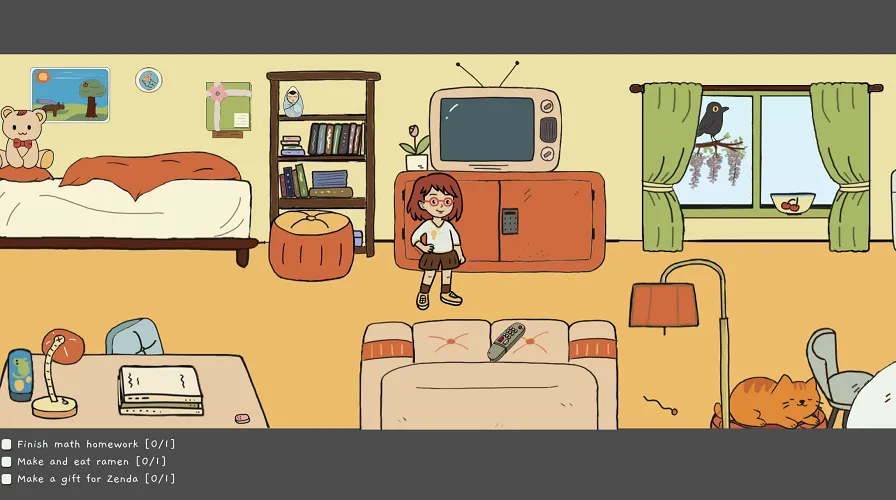
💡 Solving Heartfelt Puzzles
What distinguishes Run Away from generic escape room games is the emotional layer beneath its puzzles. Objects aren't just mechanics—they're memories. Solving a puzzle might involve finding a photo that reminds you why tonight's party matters, or discovering a note from a friend that reinforces your motivation to sneak out.
These heartfelt moments are inspired by the developer's real-life experiences, giving the game authenticity that purely fictional scenarios lack. You might encounter a puzzle involving a friendship bracelet, a mixtape, a concert ticket, or other personally meaningful items.
This emotional grounding transforms puzzle-solving from pure logic into something more resonant. You're not just figuring out how to open a door—you're remembering why opening that door matters, what's waiting on the other side, and what this small act of rebellion represents.
The game balances these touching moments with practical puzzle-solving, never becoming overly sentimental but maintaining its warm, personal atmosphere throughout.
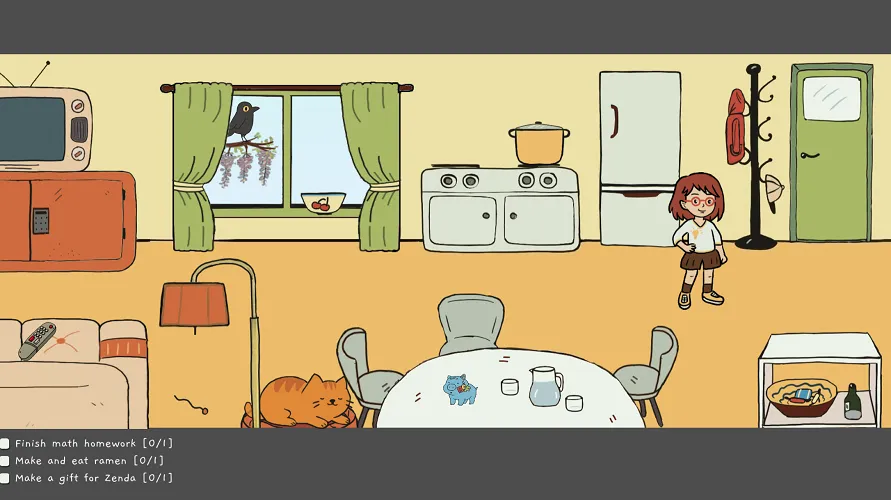
🎉 The Great Escape
As you solve the final puzzles in Run Away, all your preparation comes together. You've gathered everything you need, overcome every obstacle, and cleared your path to freedom. The front door—or perhaps a window, or back door—finally stands open.
The moment you successfully sneak out carries real satisfaction. It's not just mechanical completion; it's the culmination of careful planning, creative problem-solving, and determination. You've navigated the specific challenges of this house, this family situation, this moment in time.
And waiting beyond that threshold are your friends, the party, the night you've been looking forward to. The game ends on a note of anticipation and joy—you did it. You escaped. The adventure awaiting you beyond this escape room is just beginning.
Run Away proves that escape room games don't need elaborate setups or fantastical scenarios to be engaging. Sometimes, the most compelling puzzles are the ones rooted in real life, inspired by actual experiences, and infused with genuine emotion. This cozy little game captures a universal feeling: the excitement of breaking free, even just for one night, to be with the people who matter most.
Run Away — Escape Your House with Heart and Cleverness

Run Away offers a refreshing take on the escape room genre by grounding its puzzles in authentic, relatable moments. Instead of escaping from a sinister dungeon or mysterious laboratory, you're simply trying to sneak out of your own house to meet friends at a party. Each puzzle reflects real-life experiences—finding misplaced keys, deciphering notes, navigating family dynamics—making this short adventure feel personal and heartwarming rather than purely mechanical.
🎮 What is Run Away?
Run Away is a cozy point-and-click escape room game that transforms everyday household challenges into engaging puzzles. Your goal is straightforward: leave your house undetected and join your friends for a party. But as anyone who's tried to sneak out knows, it's never as simple as walking through the front door.
The game presents a series of interconnected tasks and puzzles that stand between you and freedom. Maybe you need to find your shoes, locate your house keys, disable a squeaky door, or leave a convincing note. Each challenge draws from real-life scenarios, creating a sense of authenticity that makes the experience feel less like solving abstract riddles and more like navigating actual obstacles.
What makes Run Away special is its warmth. The developer infused the game with personal memories and genuine moments from their own life, giving each puzzle emotional resonance. Objects aren't just puzzle pieces—they're reminders of friendships, family relationships, and the small rebellions of youth.
The game's cozy aesthetic matches its tone perfectly. Soft colors, comfortable environments, and gentle background music create a relaxed atmosphere. There's no time pressure, no jump scares, no punishing failure states. Run Away wants you to take your time, explore thoughtfully, and enjoy the process of solving each heartfelt puzzle.
Despite being a short experience, the game leaves a lasting impression. It captures that specific feeling of anticipation when you're about to do something exciting, the nervousness of hoping you don't get caught, and the satisfaction when everything clicks into place.
🕹️ How to Play Run Away
Run Away uses intuitive point-and-click controls that make exploration and puzzle-solving effortless:
Controls
Desktop:
- Mouse click – Move to locations by clicking where you want to go
- Click objects – Interact with items, examine clues, and solve puzzles
- Click and drag – Pick up items and use them on other objects
Mobile/Tablet:
- Tap to move – Touch a location to walk there
- Tap objects – Interact with anything clickable in the environment
- Drag items – Pick up and use inventory items on objects
Gameplay Mechanics
- Explore your house – Click around to discover interactive objects and areas
- Examine everything – Many puzzles require careful observation of details
- Collect items – Pick up useful objects that might help you escape
- Solve puzzles – Complete tasks that gradually clear obstacles between you and the exit
- Combine items – Sometimes you need to use multiple objects together
- Progress toward freedom – Each solved puzzle brings you closer to sneaking out successfully
Strategy Tips
- Click everything – Even seemingly mundane objects might be important
- Read notes carefully – Written clues often contain essential information
- Think practically – Puzzles follow real-world logic rather than abstract game logic
- Check multiple rooms – Solutions often require items from different locations
- Pay attention to details – Small environmental cues frequently hint at puzzle solutions
- Take your time – There's no rush; enjoy the cozy atmosphere and personal touches
📸 Run Away Gameplay Walkthrough

🏠 Starting at Home
When Run Away begins, you're in your house with one goal: get out and meet your friends. But as you quickly discover, leaving requires more preparation than simply walking out the door.
Your first task is exploration. Click around your environment to understand what's available. You'll find familiar household objects—furniture, books, personal belongings—that paint a picture of who you are and why this escape matters.
Some items are purely decorative, adding personality to the space. Others are interactive puzzle elements. The game doesn't mark which is which, encouraging organic exploration. You might click a bookshelf and discover a hidden note, or examine a desk drawer to find something essential.
This opening section establishes the game's tone: warm, personal, and grounded in reality. You're not solving abstract logic puzzles in a vacuum—you're navigating the specific challenges of this particular house and this particular escape attempt.

🔍 Discovering Clues and Items
As you explore deeper, Run Away reveals its puzzle structure. You'll encounter challenges that block your progress: a locked drawer that might contain something important, a door you can't open without the right tool, or a situation that requires creative problem-solving.
Finding solutions means collecting items and clues scattered throughout the house. A key hidden in one room might unlock something crucial in another. A note stuck to the fridge might provide a password or hint. A personal item might need to be moved or interacted with in a specific way.
The game's puzzles are satisfyingly logical. They don't rely on moon logic or arbitrary item combinations. Instead, they mirror real-world problem-solving: if you need to open a locked box, you need to find its key or discover its combination. If you need to reach something high up, you need to find something to stand on.
This grounded approach makes solutions feel earned rather than stumbled upon through random clicking.

💡 Solving Heartfelt Puzzles
What distinguishes Run Away from generic escape room games is the emotional layer beneath its puzzles. Objects aren't just mechanics—they're memories. Solving a puzzle might involve finding a photo that reminds you why tonight's party matters, or discovering a note from a friend that reinforces your motivation to sneak out.
These heartfelt moments are inspired by the developer's real-life experiences, giving the game authenticity that purely fictional scenarios lack. You might encounter a puzzle involving a friendship bracelet, a mixtape, a concert ticket, or other personally meaningful items.
This emotional grounding transforms puzzle-solving from pure logic into something more resonant. You're not just figuring out how to open a door—you're remembering why opening that door matters, what's waiting on the other side, and what this small act of rebellion represents.
The game balances these touching moments with practical puzzle-solving, never becoming overly sentimental but maintaining its warm, personal atmosphere throughout.

🎉 The Great Escape
As you solve the final puzzles in Run Away, all your preparation comes together. You've gathered everything you need, overcome every obstacle, and cleared your path to freedom. The front door—or perhaps a window, or back door—finally stands open.
The moment you successfully sneak out carries real satisfaction. It's not just mechanical completion; it's the culmination of careful planning, creative problem-solving, and determination. You've navigated the specific challenges of this house, this family situation, this moment in time.
And waiting beyond that threshold are your friends, the party, the night you've been looking forward to. The game ends on a note of anticipation and joy—you did it. You escaped. The adventure awaiting you beyond this escape room is just beginning.
Run Away proves that escape room games don't need elaborate setups or fantastical scenarios to be engaging. Sometimes, the most compelling puzzles are the ones rooted in real life, inspired by actual experiences, and infused with genuine emotion. This cozy little game captures a universal feeling: the excitement of breaking free, even just for one night, to be with the people who matter most.
Release date
Developer
Platform
